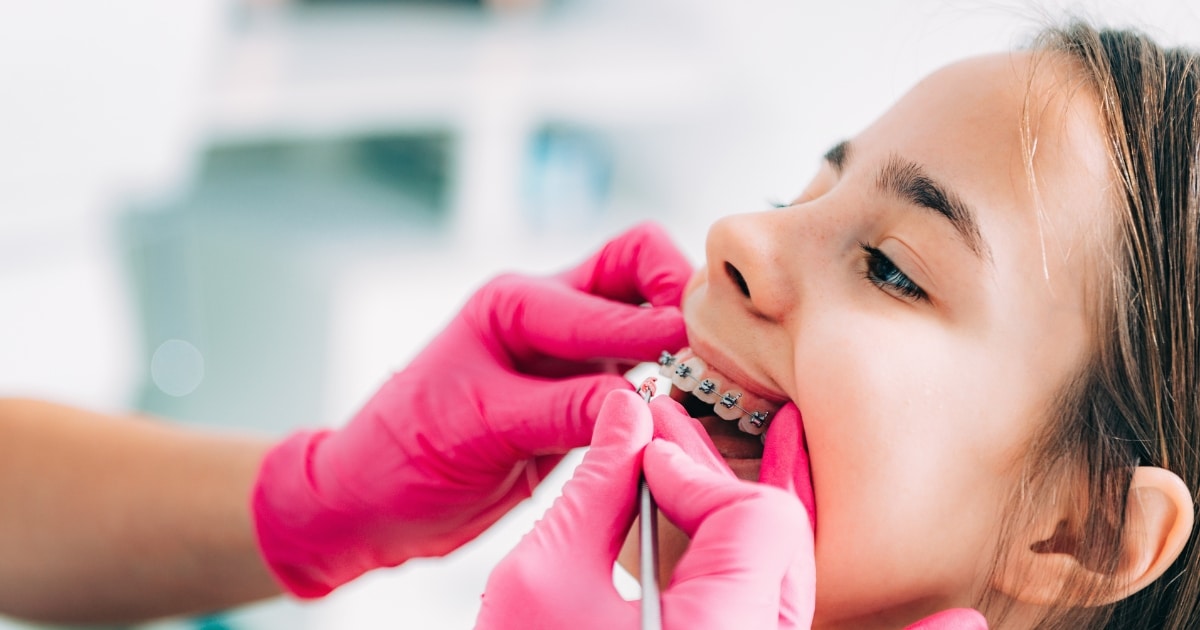Are Palate Expanders Painful For Kids?

Palate expanders are a common orthodontic appliance used to address various dental issues in children. Understanding their function, effectiveness, and potential discomforts is crucial for parents considering this treatment option for their child. In this blog, we’ll delve into the topic of palate expanders, exploring their purpose, mechanics, and common concerns associated with them.
Palate expanders, also known as orthodontic appliances, are designed to widen the upper jaw to correct issues such as crowding, crossbites, and narrow arches. These devices work by applying gentle pressure to the palate, gradually expanding it over time. While these expanders can be highly effective in addressing orthodontic problems, parents often have concerns about their potential discomfort and impact on their child’s daily life.
By understanding how these expanders function and how to manage any associated discomfort, parents can make informed decisions about whether this treatment is suitable for their child’s dental needs.
What Are Palate Expanders?
Palate expanders are orthodontic devices used to widen the upper jaw, addressing issues like crowding, crossbites, and narrow arches. They function by applying gentle pressure to the palate, gradually expanding it over time. These devices play a crucial role in correcting dental misalignments and improving overall oral health in children.
Types of palate expanders include:
1. Traditional palate expanders: These are fixed appliances attached to the molars with bands or cemented directly to the teeth.
2. Rapid maxillary expanders (RME): These devices use a screw mechanism to achieve rapid expansion of the palate.
3. Removable palate expanders: These are removable appliances that can be adjusted as needed for expansion.
4. Hybrid palate expanders: Combining features of both fixed and removable appliances, hybrid expanders offer versatility in treatment options.
How Palate Expanders Work?
Palate expanders work by applying controlled pressure to the upper jaw, specifically the palatal bones, to widen the arch gradually. This pressure stimulates bone growth and allows the palate to expand, creating additional space for teeth alignment and proper occlusion.
The process of expansion typically begins with the activation of the expander device, which may involve turning a screw or activating a spring mechanism. This action creates tension in the appliance, exerting pressure on the palatal bones. Over time, the bones respond to this pressure by remodeling and separating, resulting in incremental widening of the upper jaw. Orthodontists monitor this process closely, adjusting the expander as needed to ensure optimal results and patient comfort.
Regular adjustments are essential to maintain progress and minimize discomfort. As the palate expands, the expander may require periodic modifications to accommodate the changing oral anatomy and achieve the desired outcome. This gradual approach to expansion helps prevent excessive discomfort while effectively addressing orthodontic issues.
Common Concerns About Palate Expanders
Parents often express concerns about the potential discomfort and challenges associated with these expanders. However, understanding common issues can help alleviate apprehensions:
1. Pain and discomfort: Initially, children may experience mild discomfort or pressure as their palates adjust to the expansion process. This discomfort typically subsides within a few days as the mouth adapts to the appliance.
2. Adjusting to the appliance: It may take some time for children to acclimate to wearing a palate expander. They may experience difficulty speaking or eating initially but usually adapt quickly with practice.
3. Speech difficulties: These expanders can temporarily affect speech, causing minor lisping or changes in pronunciation. With regular practice and speech exercises, children can overcome these challenges.
4. Eating challenges: Some children may find it challenging to eat certain foods or may experience increased saliva production initially. Soft or liquid-based diets can help alleviate discomfort during this adjustment period.
5. Maintenance and care: Proper oral hygiene is crucial while wearing a palate expander to prevent food particles from getting trapped and causing irritation or decay. Regular cleaning and maintenance routines, including brushing and flossing, are essential.
Managing Discomfort and Side Effects
Managing discomfort and side effects associated with these expanders can greatly improve the overall treatment experience for children. Here are some helpful tips and coping strategies:
1. Alleviating pain: Over-the-counter pain relievers such as ibuprofen can help reduce discomfort during the initial adjustment period. Applying ice packs or using topical numbing gels may also provide temporary relief.
2. Coping strategies for children: Encouraging open communication and offering reassurance can help children feel more comfortable with the treatment process. Providing distractions such as engaging activities or favorite toys can help take their mind off any discomfort.
3. Addressing speech and eating challenges: Speech exercises recommended by the orthodontist can help children adjust to any changes in speech patterns. Gradually introducing soft or liquid-based foods can make eating more comfortable until children become accustomed to the palate expander.
4. Maintaining oral hygiene: Teaching children proper oral hygiene practices, including regular brushing and flossing, is essential for preventing irritation or decay around the expander. Using a water flosser or orthodontic wax can help remove food particles and alleviate discomfort.
Final Words!
Managing discomfort and challenges associated with palate expanders is essential for a smooth treatment journey for children. By implementing effective coping strategies and maintaining open communication with a pediatric orthodontic professional, parents can support their children through the adjustment process and ensure optimal treatment outcomes.


